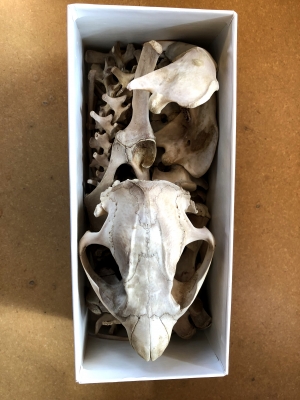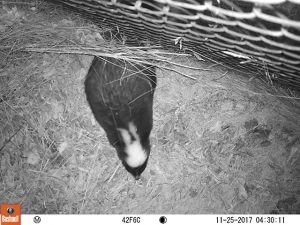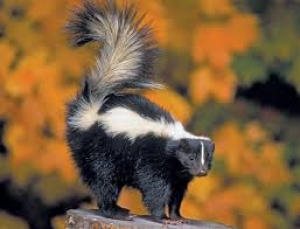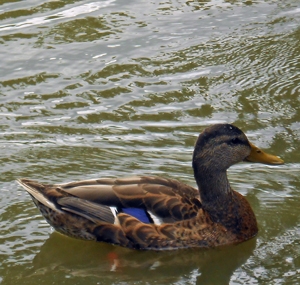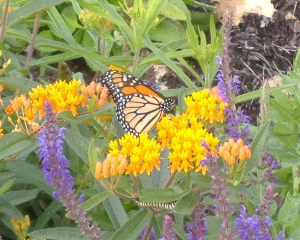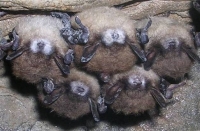
Mourning Cloaks and Butlers, the Silent Heralds of Spring
Met with the blaring calls of the Red-winged Blackbirds and joyful chatter of Robins when stepping outside, you know it’s springtime in Wisconsin. These sounds create a feeling of warmth and excitement for the summer months that are just around the corner, and are a sure sign of the changing seasons. There are, though, harbingers of spring that aren’t so vociferous. In fact, two species in particular are rather silent in their seasonal debut, but just as telling. The Mourning Cloak butterfly and the Butler’s Gartersnake are two species that rise from their winter hibernation rather than migrating back into Wisconsin.
A gift of an American Beaver skeleton
Late last February, we received an email from a community member about a beaver found dead in Riverside Park. This news was especially disheartening to us considering the near celebrity status the Milwaukee River Greenway beaver couple had gained not only publicly, but amongst staff. We had watched the activities of the beavers in Riverside Park for nearly five years and enjoyed hearing the stories from other staff and community members about their encounters.
Secret Lives
As I look longingly over the Menomonee Valley river basin currently radiating with spring promise, I am reminded of last week’s bitter rain and our dashed hopes of seeing the season's first Red-winged Blackbird. But spring’s sweet whispers delivered on the high note of a cardinal’s song today again brought hope that spring was still on its way.
But, what if we weren’t driven by hope but by some kind of undeniable intuition or reverberating internal awareness? How does a wild animal adapt during an unpredictable Wisconsin winter?
Native Animal: Striped Skunk (Mephitis mephitis)
A potent odor in Three Bridges Park recently led us to a dead skunk lying next to the Menomonee River. It rested, amazingly intact, on a sewerage outflow pipe lightly covered in snow. Whether he was the victim of hypothermia, winter starvation or a ravenous hawk remained a mystery, but whatever the skunk’s demise, it was clear that two weeks after he had perished, his scent still lingered.
Native Animal of the Month: Eastern Screech Owl
Last fall at Riverside Park, the research and community science department was hosting the Wisconsin DNR’s bat biologists for an evening of bat mist netting, when a gregarious little screech owl paid us a visit. As DNR biologist Paul White held the large group of participants enraptured with a live bat, a persistent whinny in the distance distracted those of us at the back of the group.
Wild Washington Park
Washington Park has a special place in my heart.
I took my wife there for our first date (a birdwalk, of course), we were married on the island, we bought a house that overlooks the park and it is where we found our lovable force of a Golden Retriever.
You can attend any of the programs at our Washington Park branch to see how vibrant the human community makes the park, but taking a quiet stroll will often reveal an array of wildlife worthy of a show on Animal Planet. Seriously!
Research Highlight: Migrating Monarchs!
I recently read Barbara Kingsolver's latest novel, Flight Behavior, which is a fictional story about the disruption of eastern U.S. monarch migration patterns in response to the changing climate. As always, Kingsolver writes exquisitely about the raw beauty of the natural world. The story centers around a fictional occurrence of thousands of adult monarchs overwintering on a mountain in Tennessee, lighting the mountain on metaphorical fire. Kingsolver's female protagonist, despite having little formal science education, has the necessary curiosity to make insightful observations and pose thoughtful questions about this unexpected phenomenon. The novel elucidates the importance of understanding the scientific process and how the media portrays scientific findings. The book persuaded me to learn more about the charismatic monarch butterfly.
White-nose Syndrome Surveillance in Wisconsin
Wisconsin’s hibernating bat species (cave bats) are in danger of contracting a devastating disease called white-nose syndrome (WNS). This disease, caused by the fungus Geomyces destructans, has decimated populations of cave bats in the Northeast, Mid-Atlantic and Southeast US. Over six million bats have died since the initial detection in New York in 2006, and the disease has spread to 22 states and 5 Canadian provinces.
Copyright © 2023 The Urban Ecology Center


